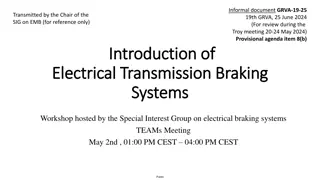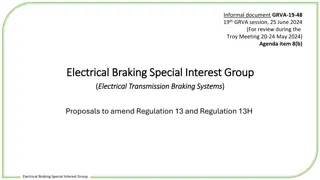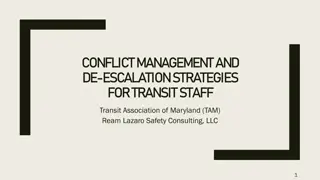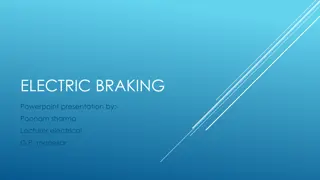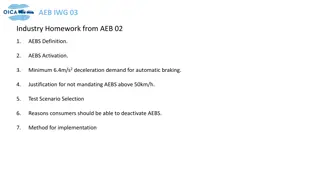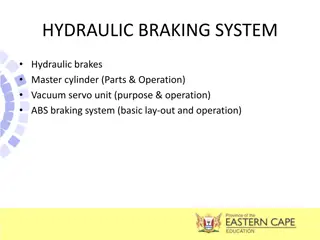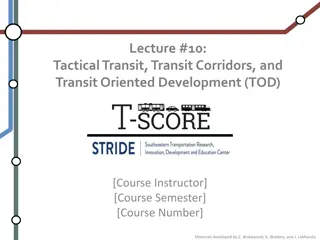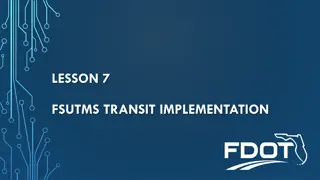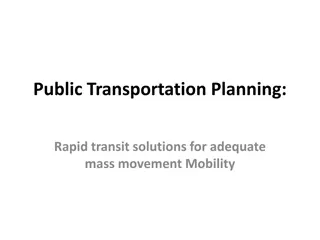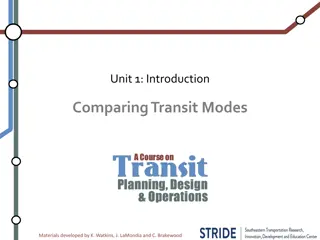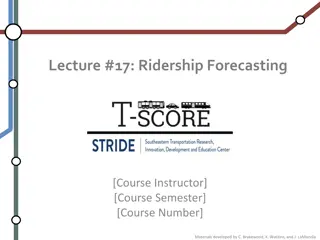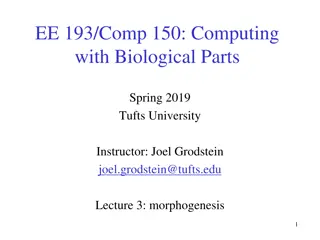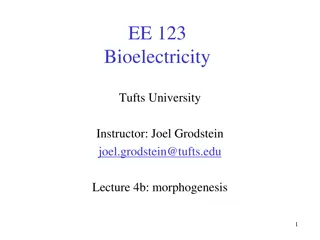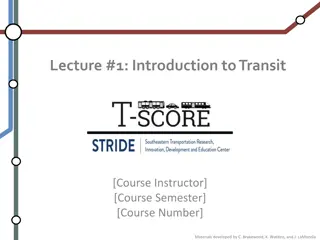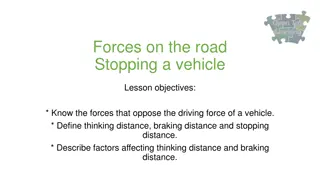Regenerative Braking in Mass Transit: Harnessing Energy Efficiency
Regenerative braking in mass transit is an energy recovery mechanism that slows down vehicles while converting the generated power for immediate use, storage, or redistribution. This technology, while not entirely new, offers opportunities for increased energy efficiency, reduced maintenance costs, and enhanced environmental benefits. However, challenges such as the need for backup brakes and limitations in energy storage systems must be addressed to maximize its effectiveness in public transportation systems.
Download Presentation

Please find below an Image/Link to download the presentation.
The content on the website is provided AS IS for your information and personal use only. It may not be sold, licensed, or shared on other websites without obtaining consent from the author. Download presentation by click this link. If you encounter any issues during the download, it is possible that the publisher has removed the file from their server.
E N D
Presentation Transcript
REGENERATIVE BRAKING IN MASS TRANSIT By Ch. Sai Ram, Assoc.Professor, Sri Indu College of Engineering & Technology.
1 Outline Introduction Theory Brake controller Opportunities of regenerative braking Challenges of regenerative braking Energy storage systems Existing implementation Conclusion
2 Regenerative Braking An energy recovery mechanism which slows down a vehicle Converted energy can be utilized immediately, stored, or sent back to the electric grid Not new technology
3 Theory How regenerative braking works: Wheels turn motor and generate power Reversal process: cut power to the motor Regenerative brakes initiated *Substantially more beneficial the more a train stops Kinetic energy recoverable from regenerative braking:
4 Brake Controller Fundamental to regenerative braking functioning properly Remote control Determines initiation, termination, and duration of braking Monitors speed and calculates the torque available to generate electricity Where TR is the rotational torque, i is the continuously variable transmission speed ratio, N is the final reduction gear ratio, TREG is the regenerative torque by the motor, is the generation efficiency, and W1 and W2 are weight factors Most imperative: determining if the motor can handle the force necessary to bring the vehicle to a halt
5 Opportunities For Regenerative Braking Lengthened brake life: lowers maintenance and costs Effective in AC locomotives Increased energy and environmental awareness Air Quality Energy Efficiency Meet regulatory requirements SO2 CO2 NOx
6 Challenges for Regenerative Braking Regenerative braking must be used in conjunction with other brakes Backup brakes in the event of failure Battery and capacitor charge limitations Not 100% reliable Still a loss of energy Less effective in DC locomotives
7 Energy Storage Systems Ultracapacitor Storage Systems Designed small to reduce wavering Multiple applications Battery Storage Longer battery usage before recharging Completely electric application Flywheel Energy Storage Momentum rotation Vehicle runs smoothly Extra weight from heavy metal rim Stores energy for a long time Superconducting Magnetic Energy Systems Multiple benefits Rarely used Virtually unavailable for regenerative braking right now
8 Existing Implementation High speed train applications have surfaced in Japan, France, India, New Zealand, England and Germany A Northeastern transportation company in the United States has seen a huge success from regenerative braking implementation $900,000 state grant and $1.44 million grant from FTA An intercity passenger train service in the United States received 70 high-efficiency electric trains destined for routes across DC, Massachusetts, New York, and Pennsylvania Multiple other applications in the Western United States
9 Conclusion Increased interest in regenerative braking Technology is available and useful Multiple benefits Few challenges Energy storage methods can be utilized
10 Thank you!




